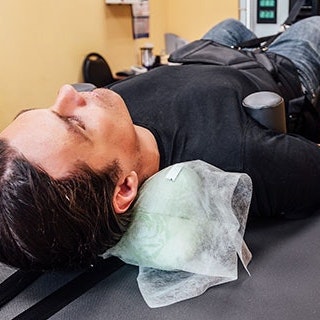Our services

WHY CHOOSE
ExactaCare
Trauma injury rehab care has the following benefits:
- Alleviates aches and pain caused by your injury
- Reduces inflammation surrounding your injury
- Reduces any stiffness you may be experiencing
- Alleviates spinal connective tissue injury effects
- Alleviates headaches caused by your injury
- Reduces soft tissue damage
- Speeds up recovery
WE ARE READY TO HELP
Our trauma credentialed providers are trained to treat your injuries using a combination of the most current technologies. After a thorough evaluation, including digital X-rays and motion analysis they will customize a specific treatment plan, therapeutic modalities, stretches and muscle-specific exercises to help you on the road to recovery.




